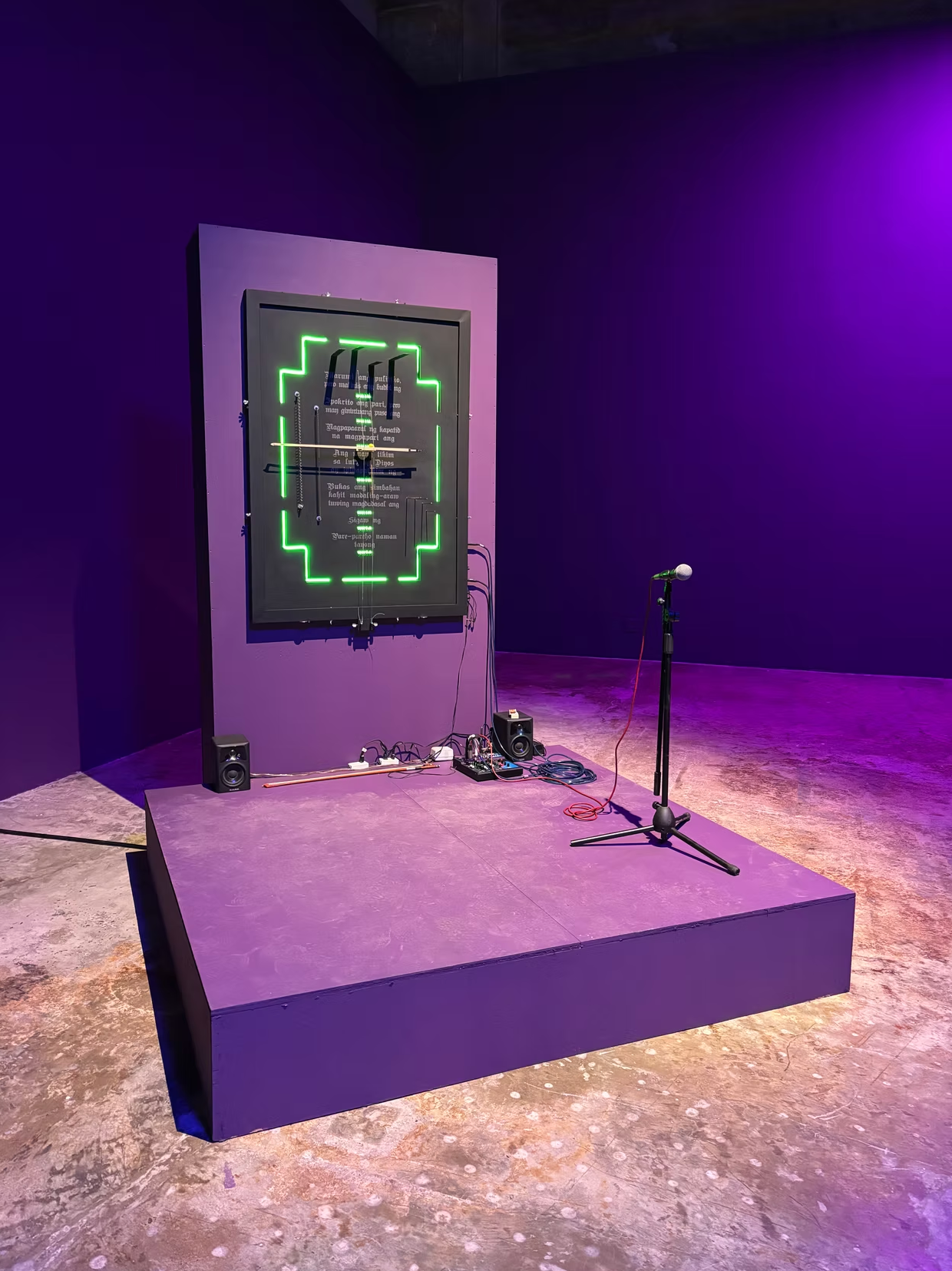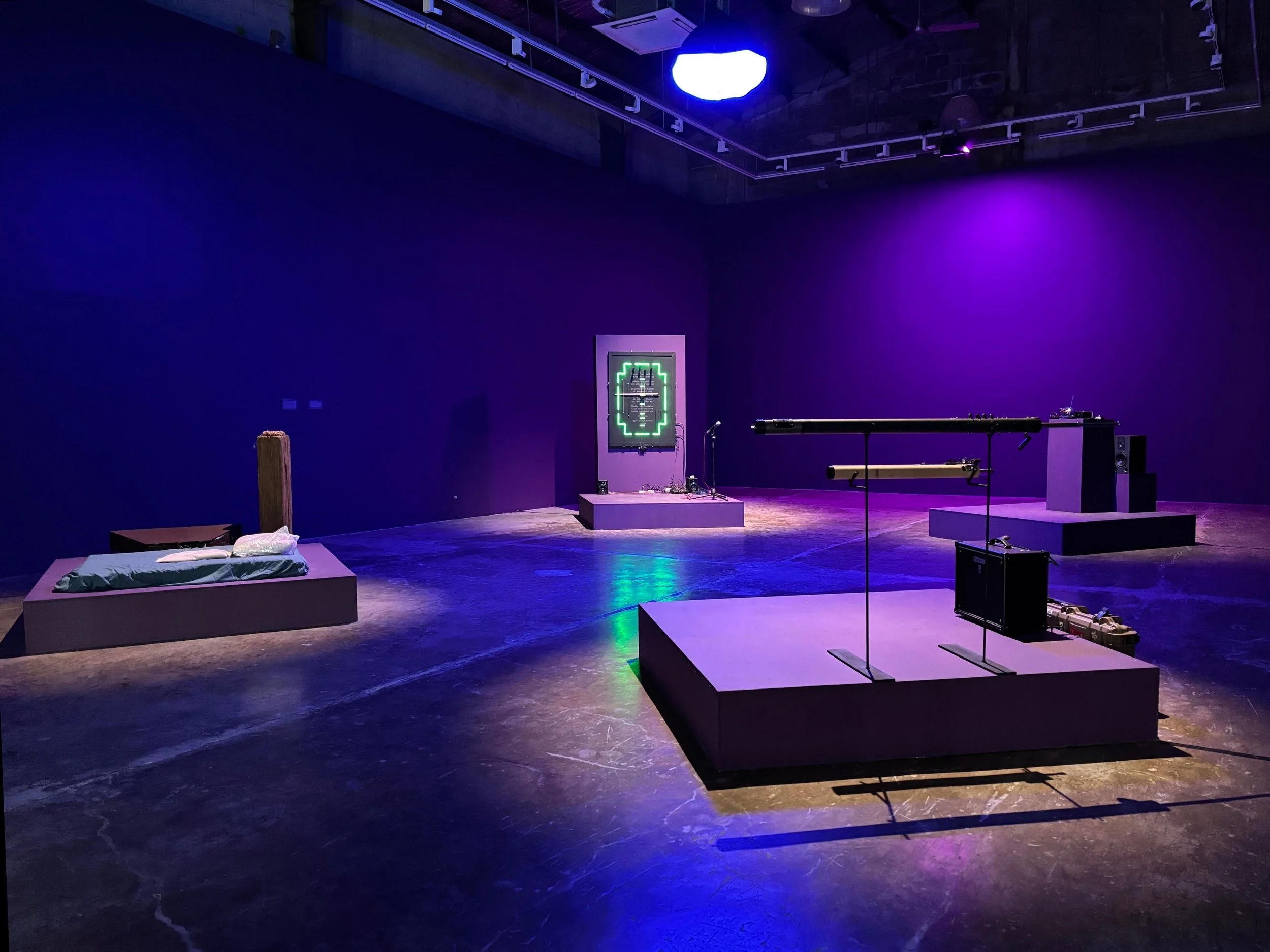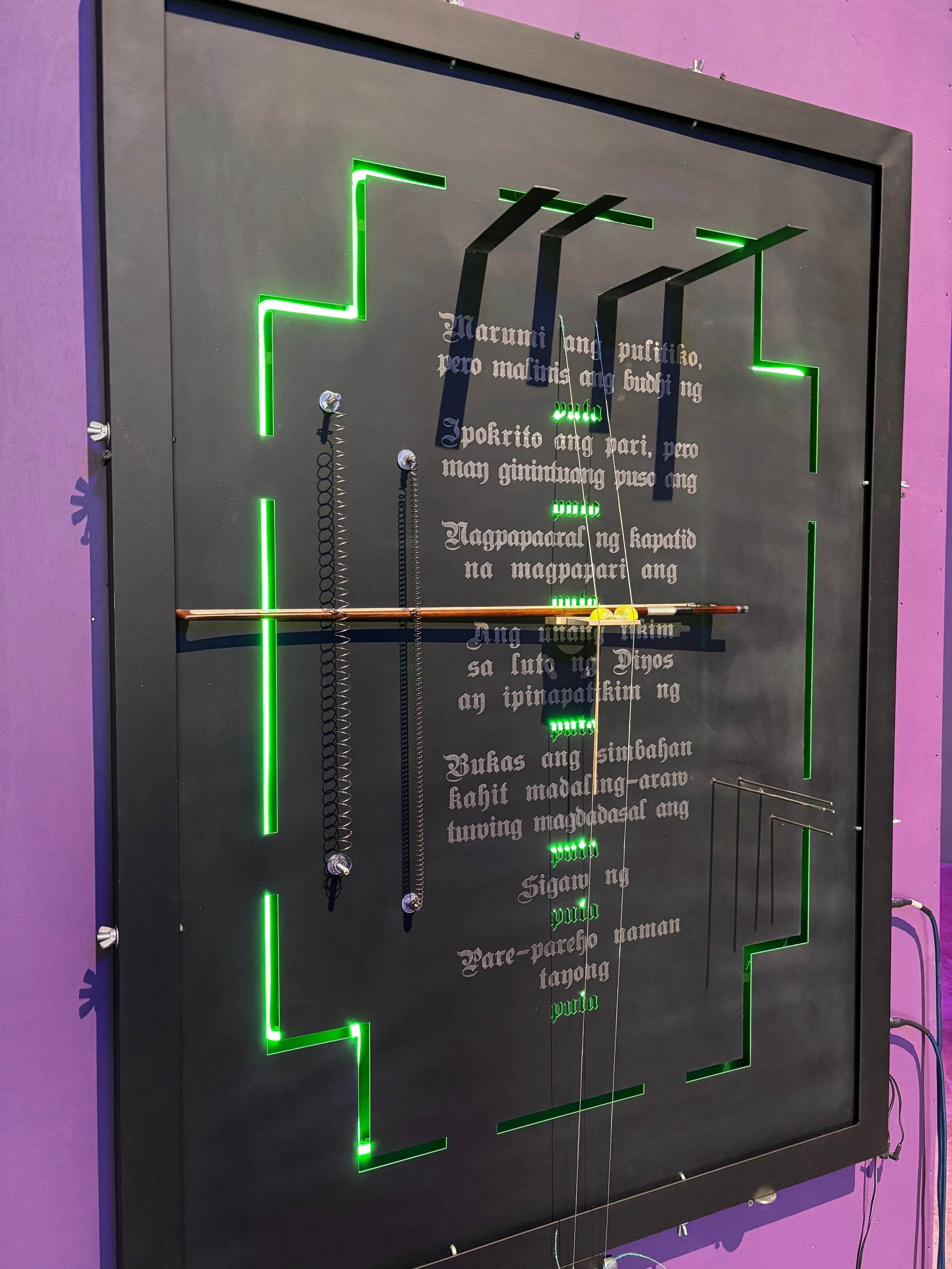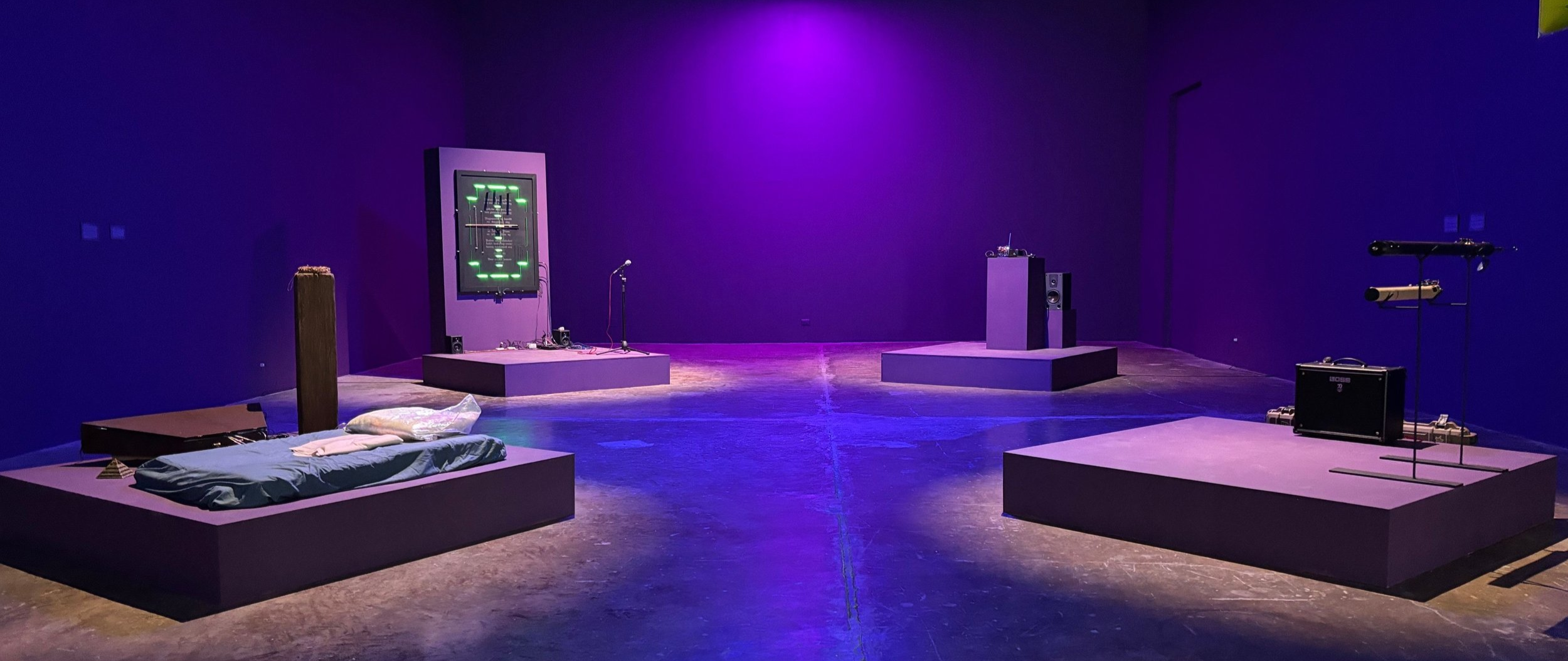Solinaw Alingawngaw
by Marco Ortiga & Silke Lapina, 2025 variable (size)
12 July – 02 August 2025
Group Show Greatest Hits, Finale Art File, Manila
Solinaw Alingawngaw is conceived as a modern ritual object in the form of a cross. Its steel plate and custom knobs evoke the textures of horror-movie sound design, each string and mic amplifying eerie timbres through vibrations which is picked up with a contact mic. When playing the instrument, the performer must read Pete Lacaba’s poem Lahat ng Hindi Ko Kailangang Malaman, Natutunan Ko sa Pelikulang For Adults Only (1983) from the cross’s center, transforming text into an incantation. A steady LED light bathes the steel surface in an otherworldly glow, underscoring the work’s fusion of past and present. Through every bow stroke and pluck, Solinaw Alingawngaw illustrates how small gestures “reverb” outward like a butterfly effect, reflecting on how modern poems serve as our spells and prayers today.
TALL GALLERY
LOVOL: new instruments
Datu Arellano x Malek Lopez
Eric Bico x Gerecho Iniel
IC Jaucian x Teresa Barrozo
Marco Ortiga x Silke Lapina
with
Katz Trangco
Himig Sanghaya Chorale
Curator Erwin Romulo proposes a theory that all musical instruments were created for a purpose beyond pure function. He suggests that it was necessary for cultures to create instruments for a particular time, and asks, that if we accept that, what would future ethnomusicologists study from our era?
That was the prompt given to three groups in 2019 for a project called Future Ethnomusicology. Each group was composed of two members each: a sound practitioner/composer and a visual artist/maker. The pairs had never worked together before. Composer Alexander John Villanueva was commissioned to write a new composition for both a classical ensemble and for the newly invented instruments. The debut performance was on September 20, 2019 at the Huseng Batute Black Box Theatre at the Cultural Center of the Philippines.
For Greatest Hits, the Finale Tall Gallery features the second installment of Future Ethnomusicology. This second iteration includes new collaborations or updated versions of the invented instruments. Composer Katz Trangco, head of the U.P. College of Music Composition Department, was commissioned to write a new piece for these instruments to be performed together with 20-person vocal chorale Himig Saranghaya.
Greatest Hits
12 July – 02 August 2025
Finale Art File, Manila
About the show
We ascribe much meaning to sound from its source. If we are prompted with the image of waves breaking on a shore, even the susurrus of radio static becomes prelapsarian ASMR to our ears.
A record that is commercially available on vinyl—be it of noise, field recordings, long-duration minimalism, live electronic music, free jazz, free improvisation— is neatly categorized in the avant-garde section at record shops and purchased as “music”.
In the Philippines, where all manner of objects fill the spaces of our every day, this is closer to home. We cherish objects and hold on to them as talismans, heirlooms, and keepsakes. Ephemera connects us to the eternal. We commune with figures and images of saints where we live. Even in the digital age, Filipinos remain ever reverent to radios, speakers, and Magic Sing.
The exhibition is about sound.
It features sound objects: musical instruments, stereo boomboxes, and a videoke machine.
The choice of objects in the exhibition reflects a certain period and place: Metro Manila from the 1980s to the present. It also represents the experience of the curator being witness, accomplice, and instigator in the city’s various scenes involving art, music, and performance.
By Erwin Romulo




